Millions of people use mobile applications for shopping, entertainment, and social interactions. As a result, the competition has forced businesses to consider mobile application development. Investing in mobile applications is no longer an option. It is a necessity to meet the increasing competition in the market. Mobile applications are one of the most effective ways to grow your brand. They help with everything – from engagement to lead generation.
Mobile apps, with their features, can successfully target customers in real-time and offer custom solutions to their problems. It therefore becomes essential to know the cost of mobile app development. Read further to know the major influencing factors affecting the cost of mobile app development.
Benefits of Mobile App Development
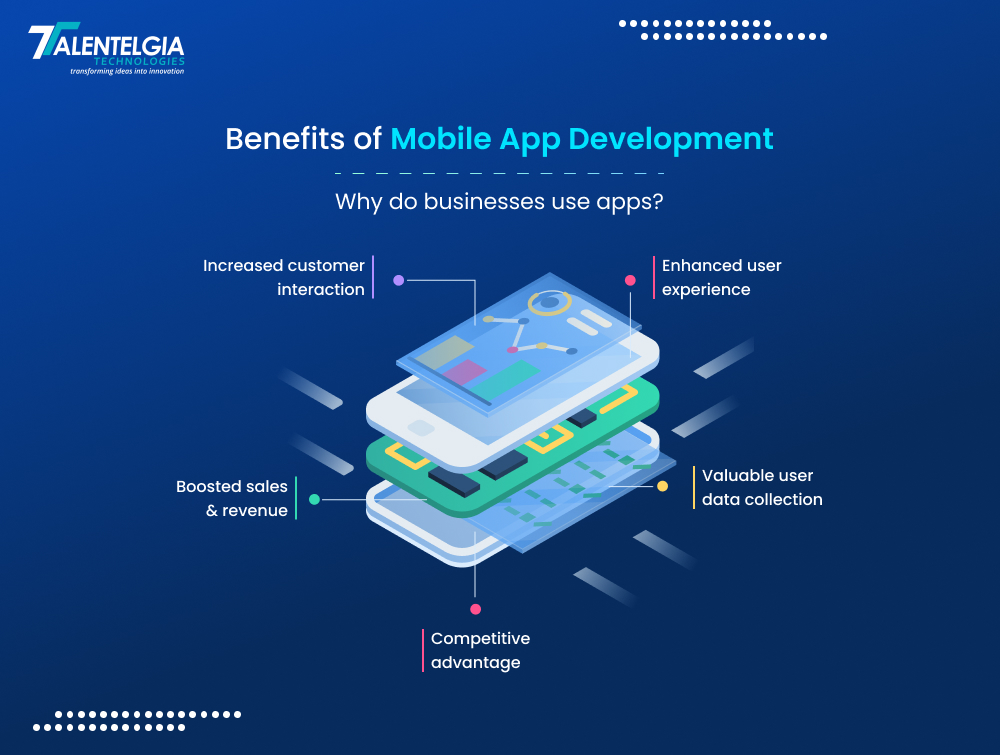
Mobile apps have transformed how people interact with businesses and obtain information. Applications present benefits for consumers as well as enterprises. Apps provide a one-on-one method of interacting with customers, making the brand popular, and expanding sales.
Mobile Applications also let you collect valuable data, greatly assisting decision-making. To customers, apps give convenience and save time. They offer more services and entertainment, making living easier and much more enjoyable. Read below to learn more about their benefits.
1. Increased Customer Interaction
Mobile apps create a direct line of communication with your audiences. Push notifications, customized content, and user-friendly interfaces keep customers engaged with your products. Constant interactions result in brand loyalty and higher retention rates.
2. Easier User Experience
Apps are far smoother than websites, especially on mobile. These have the capability to go offline, make easy navigation, and have quick load times, which makes them of value for their users.
3. More Sales and Revenue
A well-designed app will compel users to spend money. An in-app purchase feature and a seamless checkout mechanism for e-commerce businesses increase online purchases. Further studies have found that the amount users spend on mobile is higher than on desktop.
4. Collect User Data
Mobile applications can capture user behavior data. It’s helpful for the business in guiding them on how they can improve their products and strategies for marketing. Knowing what your customers like or dislike helps you in being transparent.
5. Competitive Advantage
In the saturated market today, it is your mobile app that sets your website apart from the competitors. Although a majority of businesses are dependent on websites, an app can give you an edge. If you have not yet moved to mobile technology, this can lead to significant losses over time.
Factors Affecting the Cost of Mobile App Development
Developing an application for mobile devices costs a lot and depends on various factors. Knowing these factors will make it easier for business owners to understand the mobile application development costs.
Now let’s discuss & understand some factors that affect the mobile app development cost. Some of these include – its complexity, platform, size, expertise of the development team, and additional features.
1. Complexity of Application
Complex apps require more functionalities, platform compatibility, and intricacy in the design. Developers also have to spend more time on integration and backend infrastructure.
So this increases the development costs. The costs tend to be lower for simple applications with fewer features, straightforward design, and minimal integrations.
Simple vs. Complex Mobile Application Features
An app’s complexity is not only due to the number of features. It also depends on the underlying technologies that power them.
Simple applications usually have fewer screens and functionalities – like simplified user logging or simple form submissions. These applications generally apply minimal processing to the data. For these, developers use existing templates, making the development process quicker.
Advanced Features and Real-Time Functionalities
The more advanced the app, the more time it is going to take to develop. Examples include real-time sync functionality, customizable animation, chat functionality, geolocation, and also third-party API payment gateways or social networking.
All these raise the level of complexity, and that means more complex code and much more stringent testing for stability. Both development time and costs go up as the development and testing of these features take more time.
Complex Back-End Systems and Security
High-end technologies and back-end data handling systems are used for complex applications. This includes enhanced data security protocols, permissions on user access, encryption, and safe databases.
They need a higher skill set, raising the cost of development.
Mobile App Development Costs Based on Complexity
| App Type | Functionalities | Examples | Estimated Cost |
| Simple | Basic UI, limited features, no storage | Calculator, stopwatch, basic note-taking app | $15,000 – $45,000 |
| Mid-Level | Customized UI, API integrations, data storage | Social media app, e-commerce app, fitness tracker | $50,000 – $180,000 |
| Complex | Advanced features, real-time interactions, complex workflows | Gaming app, enterprise app, AR/VR app | $1,70,000 – $300,000 |
2. Choice of Platform
Choosing a platform also heavily influences the cost of development. Cross-platform development often requires separate code bases and skill sets, which raises the cost.
However, cross-platform mobile app development frameworks can help you reduce time and development costs. So, you can implement one code base for multiple platforms. The ultimate depends on your target audience and specific requirements.
iOS Development
iOS app development strongly benefits from Apple’s closed ecosystem. It simplifies the designing and developing of an application that works fine on Apple devices.
However, it requires extra time to ensure they work across all the supported iOS devices. On the other hand, android apps have fewer device specifications to fit. This offers a faster time-to-market based on less fragmentation.
Android Development
Android app development is significantly harder than iOS. This is because of the vastness of devices, their screen sizes, and the different types of operating systems.
This openness means the possibility of allowing flexibility in tailoring the application. However, it needs a lot of testing. Therefore, the time and cost of developing an Android app can increase. At the same time, android app development offers a cost-effective development solution to connect to a wider user base
Cross-Platform Development
Cross-platform applications are built using Flutter or React Native from a single codebase and offer reduced development time. This makes cross-platform app development cheaper, yet it still lacks a significant edge over native features. This is because the native applications offer better performance.
Native vs. Cross-Platform
The decision to go for native or cross-platform development can be very challenging.
These include your target audience, the functionality required for the app, and long-term business goals for your application.
You can go for native app development if your app requires the features of a specific platform. For example ARKit for iOS or Google Play Services. However, if you need a simpler app or are targeting both platforms at the same time, the cross-platform approach is more efficient.
Average Hourly Rates Mobile Developer and Estimated Annual Earnings
| Developer Type | Average Hourly Rate | Estimated Annual Earnings (6 Months) |
| iOS or Android App Developer | $40-160 | $38,400 – $153,600 |
| Xamarin/PhoneGap Developer | $18-60 | $17,280 – $57,600 |
| React Native Developer | $25-160 | $24,000 – $153,600 |
3. Design and User Experience
UX design plays a huge role in the relationship between the end user and the mobile application. This impacts retention and engagement rates in many ways.
As long as this market has apps competing against each other, poor UI design can lead to losses. UX puts much emphasis on intuitiveness, responsiveness, and accessibility. These are of great importance to meet the happy user’s requirements.
Many design decisions are very impactful for user satisfaction and app success. Like the placement of buttons or even the color scheme.
Basic vs. Custom Design
The term “basic app design” refers to the use of template pages with few personalizations.
An app requires particular designs unique to that app to make it engaging. However, the custom design process calls for UX research, wireframing, and usability testing to develop a user-friendly interface.
Interactive features such as advanced animations, micro-interactions, and illustrations can also increase the likelihood of user engagement.
Responsive Design and Advanced Interaction Patterns
The large number of mobile devices makes responsive design necessary. Since they perform well on cross-functional devices and screen sizes.
It is, however, difficult for most apps, especially the sophisticated interaction patterns. These may include apps operating with swipe gestures or voice commands. Such complex operations require special solutions whose introduction brings additional time in development and testing.
Responsive design and advanced interactions create added complexity and expense in the mobile application development process.
4. Features and Functionality
The features of your mobile application go a very long way in deciding a significant portion of its cost.
Basic features are ones used by all applications. So, these are a part of the general modules used for development.
Using them keeps the costs reasonable, usually in the $10,000 to $20,000 range.
These standard features are a part of user engagement and app functionality. But do not significantly add complexity and time to the project.
Advanced Features
Adding extra features to your app becomes complex and expensive.
For example, geolocation requires stronger backend support. Video streaming and social media integration demand thorough testing for a smooth deployment.
Additionally, integrating real-time updates or live chat functionalities requires investment along with backend development, increasing the timeline and budget.
Third-Party Integrations
Advanced filters allow the user to filter by multiple criteria and require third-party service integrations.
Integration makes the functionalities of an app richer. It also provides an entry path for possible security breaches and increases costs associated with the development process.
Each new feature added needs thorough testing and debugging which makes the development lengthy and expensive.
Analytics, AI, and AR:
Analytics and AI integration are important as they track user behavior. However, these take a lot of backend development and testing.
More advanced features, such as AI-driven recommendations, AR, and ML models, provide niche functionality. Businesses often have to pay a premium fee to use these.
Developers need specialization to implement these. They demand extensive development time, pushing costs into the $20,000 to $70,000 range.
5. Backend Development
The back end of an application works is what makes everything happen, though not visible to users.
The back end does some of the most important tasks. These include storing data, processing requests, authenticating a user account, and synchronizing with the server.
Therefore apps need to have a good solid backend for things to work right, especially as it scales. A minimal backend supports basic features of user login and account management. This is often achieved by just including a database, thus saving costs.
Lightweight Backend Solutions
Applications with fewer features are built with lightweight backend solutions like Firebase or AWS Lambda. These provide pre-fabricated implementations that can make the process of setting up a basic backend easier and faster.
This would be a perfect fit for applications with a smaller user base; then developers wouldn’t waste too much time and money on it.
Complex Backends for Advanced Features
Complex apps require synchronization of real-time data, advanced analytics, or communication with a variety of third-party services. So they need a more comprehensive and robust backend architecture.
They may involve a cloud computing platform such as AWS or Microsoft Azure. Since these need scalability for performance optimization and security. This is helpful when dealing with bigger businesses so that the app can meet rising demands.
Security and Compliance in Backend Development
Secure data processing is key for applications that deal with sensitive information, such as finance or healthcare applications. For such applications, ensure the highest security encryptions. Also ensure that they adhere to the provisions of laws on data privacy, which in this case are GDPR or HIPAA.
From server to database and API configuration, backend development requires the highest security.
A backend needs to be scalable, secure, and compliant with the boundaries of regulation. But this needs a lot of time and resources.
6. Development Team Location
Development is the most costly aspect of mobile application development. But these costs depend on different regions of the world. General rates for developers vary and relate to local living costs and the local economic condition of that area.
For example, a developer from North America or Western Europe costs higher than one from Eastern Europe or Asia.
Cost Variations Across Regions
Developers in North America and Western Europe typically cost on premium levels. The professionals in these groups fall in the $100 to $250 per hour. This is due to the high cost of living and salaries to afford talented professionals.
Developers from India, the Philippines, and Eastern Europe quote less, often in the $20 to $100 per hour range.
Such extreme contrasts make outsourcing to these places highly attractive for most companies.
In-House vs. Outsourcing: Finding the Balance
The model you choose – in-house development, outsourcing, or a mix of both depends on your specific project requirements. However, this will affect the budget for your project.
Each of these has its advantages and disadvantages. This makes it very crucial to check your requirements carefully before finalizing a particular approach.
8. Quality Assurance
Quality assurance is one of the most elementary elements of mobile application development, often underestimated.
The QA process ensures the functionality of the app. This provides users with a smooth experience without any bugs, glitches, or crashes. A strong testing strategy includes all the criteria concerning performance under load, usability, security, as well as compatibility on different devices and operating systems.
Manual Testing
A human tester identifies issues associated with usability and that all the features work correctly. Manual testing focuses on how intuitive and simple the app is to use. This makes it crucial for user experience.
Manual testing offers input by the tester based on the usability of the app. An automated test might not provide this.
Automated Testing
This involves using special tools to check the code of the application and the functionality of the application. This works proficiently even in conditions that would have been otherwise very difficult or even impossible manually.
One typical automated test is stress testing, checking how well the app can handle large volumes of users.
Apps with real-time data streams, third-party integrations, or compatibility with multiple devices need more comprehensive testing.
| Testing Type | Cost Estimate |
| Basic Testing | $2,000–$5,000 |
| Comprehensive Testing | $10,000–$30,000 |
How to Save Costs on Mobile App Development
A mobile app may need significant investment. But carefully planning each step without compromising on the quality can go a long way. Here are a few cost-effective measures for cost savings on a mobile app development process.
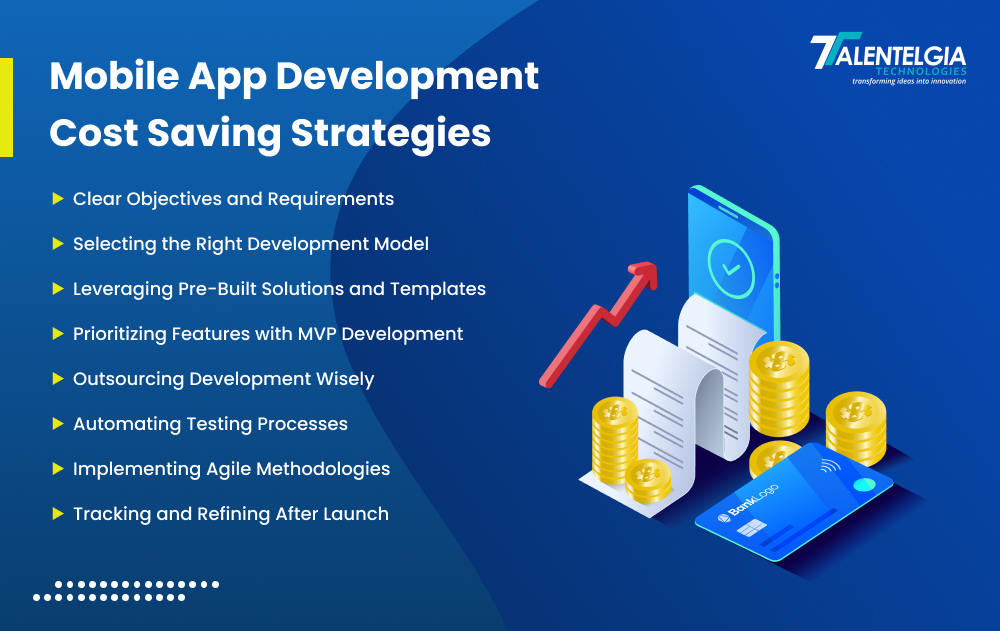
1. Clear Objectives and Requirements
Set app objectives and requirements beforehand. A well-defined scope will avoid additional costs. Consider in-depth market research to ascertain user needs and expectations before starting to develop an app. This will streamline the development process so that your team may work more efficiently and effectively.
2. Select the Correct Development Model
The right development strategy is a great way to cut costs. Determine if you need a native, hybrid, or cross-platform development strategy depending on what suits your needs best.
Native offers better performance. But hybrid or cross-platform solutions are cost-effective and save development time for budget-driven projects.
3. Benefit from Pre-Built Solutions and Templates
The use of pre-built solutions, templates, or open-source components can speed up development and reduce its costs.
Most frameworks and libraries have ready-made solutions for frequently required functionalities. This allows developers to focus on creating unique features that enhance the user experience. It saves a lot of time, aside from expediting the overall project timeline.
4. Feature Prioritization using MVP Development
An MVP is a very cost-effective solution. Since it sets an initial sprint of the most core features to identify main user needs and get to market faster.
This process then adapts to user input and possible reconditions to align with market demands, thus not wasting resources.
5. Outsource development wisely
Outsourcing can only work if it is done with caution. You can negotiate for the best rate with the great offshore development teams without sacrificing the quality. Research thoroughly to find the most experienced developers with a proven track record. The long-term connection with the outsourcing team also helps in saving costs along with ensuring better collaboration.
6. Automate Testing Processes
Savings in time and resources are also achieved through automation by investing in automated testing tools. These tests detect bugs much earlier in the development cycle. This reduces the extra time needed for laborious manual testing.
Although it requires a small upfront investment in the tools and setup, however, the possibilities are massive long-term savings concerning the time required for testing and also enhancing app reliability.
7. Implement Agile Methodologies
Agility adds flexibility and efficiency to the development process. Refining the objectives of a project keeps the resources focused on where they can make the greatest difference. Agile approaches tend to speed up the delivery. This allows teams to easily adapt in case of changing the direction when requirements change, decreasing the development cost.
8. Track and Refine After Launch
After the launch, continue tracking areas for improvement based on performance metrics and feedback from the users. Data-driven decisions regarding updating or adding more features would be possible based on this analysis. Optimization of the app based on user behavior will avoid investing in things that their audience does not appreciate.
Conclusion
Developing a mobile application requires planning. So you need to understand the factors that add to the costs. Right from the idea, to design, and eventually into continued maintenance; each adds up to a total cost.
Having this in mind, you need to analyze and evaluate your requirements and expectations. So, get ready to find the potential through a mobile app for your business. Get in touch with our team!


 Healthcare App Development Services
Healthcare App Development Services
 Real Estate Web Development Services
Real Estate Web Development Services
 E-Commerce App Development Services
E-Commerce App Development Services E-Commerce Web Development Services
E-Commerce Web Development Services Blockchain E-commerce Development Company
Blockchain E-commerce Development Company
 Fintech App Development Services
Fintech App Development Services Fintech Web Development
Fintech Web Development Blockchain Fintech Development Company
Blockchain Fintech Development Company
 E-Learning App Development Services
E-Learning App Development Services
 Restaurant App Development Company
Restaurant App Development Company
 Mobile Game Development Company
Mobile Game Development Company
 Travel App Development Company
Travel App Development Company
 Automotive Web Design
Automotive Web Design
 AI Traffic Management System
AI Traffic Management System
 AI Inventory Management Software
AI Inventory Management Software
 AI Software Development
AI Software Development  AI Development Company
AI Development Company  AI App Development Services
AI App Development Services  ChatGPT integration services
ChatGPT integration services  AI Integration Services
AI Integration Services  Generative AI Development Services
Generative AI Development Services  Natural Language Processing Company
Natural Language Processing Company Machine Learning Development
Machine Learning Development  Machine learning consulting services
Machine learning consulting services  Blockchain Development
Blockchain Development  Blockchain Software Development
Blockchain Software Development  Smart Contract Development Company
Smart Contract Development Company  NFT Marketplace Development Services
NFT Marketplace Development Services  Asset Tokenization Company
Asset Tokenization Company DeFi Wallet Development Company
DeFi Wallet Development Company Mobile App Development
Mobile App Development  IOS App Development
IOS App Development  Android App Development
Android App Development  Cross-Platform App Development
Cross-Platform App Development  Augmented Reality (AR) App Development
Augmented Reality (AR) App Development  Virtual Reality (VR) App Development
Virtual Reality (VR) App Development  Web App Development
Web App Development  SaaS App Development
SaaS App Development Flutter
Flutter  React Native
React Native  Swift (IOS)
Swift (IOS)  Kotlin (Android)
Kotlin (Android)  Mean Stack Development
Mean Stack Development  AngularJS Development
AngularJS Development  MongoDB Development
MongoDB Development  Nodejs Development
Nodejs Development  Database Development
Database Development Ruby on Rails Development
Ruby on Rails Development Expressjs Development
Expressjs Development  Full Stack Development
Full Stack Development  Web Development Services
Web Development Services  Laravel Development
Laravel Development  LAMP Development
LAMP Development  Custom PHP Development
Custom PHP Development  .Net Development
.Net Development  User Experience Design Services
User Experience Design Services  User Interface Design Services
User Interface Design Services  Automated Testing
Automated Testing  Manual Testing
Manual Testing  Digital Marketing Services
Digital Marketing Services 
 Ride-Sharing And Taxi Services
Ride-Sharing And Taxi Services Food Delivery Services
Food Delivery Services Grocery Delivery Services
Grocery Delivery Services Transportation And Logistics
Transportation And Logistics Car Wash App
Car Wash App Home Services App
Home Services App ERP Development Services
ERP Development Services CMS Development Services
CMS Development Services LMS Development
LMS Development CRM Development
CRM Development DevOps Development Services
DevOps Development Services AI Business Solutions
AI Business Solutions AI Cloud Solutions
AI Cloud Solutions AI Chatbot Development
AI Chatbot Development API Development
API Development Blockchain Product Development
Blockchain Product Development Cryptocurrency Wallet Development
Cryptocurrency Wallet Development About Talentelgia
About Talentelgia  Our Team
Our Team  Our Culture
Our Culture 
 Healthcare App Development Services
Healthcare App Development Services Real Estate Web Development Services
Real Estate Web Development Services E-Commerce App Development Services
E-Commerce App Development Services E-Commerce Web Development Services
E-Commerce Web Development Services Blockchain E-commerce
Development Company
Blockchain E-commerce
Development Company Fintech App Development Services
Fintech App Development Services Finance Web Development
Finance Web Development Blockchain Fintech
Development Company
Blockchain Fintech
Development Company E-Learning App Development Services
E-Learning App Development Services Restaurant App Development Company
Restaurant App Development Company Mobile Game Development Company
Mobile Game Development Company Travel App Development Company
Travel App Development Company Automotive Web Design
Automotive Web Design AI Traffic Management System
AI Traffic Management System AI Inventory Management Software
AI Inventory Management Software AI Software Development
AI Software Development AI Development Company
AI Development Company ChatGPT integration services
ChatGPT integration services AI Integration Services
AI Integration Services Machine Learning Development
Machine Learning Development Machine learning consulting services
Machine learning consulting services Blockchain Development
Blockchain Development Blockchain Software Development
Blockchain Software Development Smart contract development company
Smart contract development company NFT marketplace development services
NFT marketplace development services IOS App Development
IOS App Development Android App Development
Android App Development Cross-Platform App Development
Cross-Platform App Development Augmented Reality (AR) App
Development
Augmented Reality (AR) App
Development Virtual Reality (VR) App Development
Virtual Reality (VR) App Development Web App Development
Web App Development Flutter
Flutter React
Native
React
Native Swift
(IOS)
Swift
(IOS) Kotlin (Android)
Kotlin (Android) MEAN Stack Development
MEAN Stack Development AngularJS Development
AngularJS Development MongoDB Development
MongoDB Development Nodejs Development
Nodejs Development Database development services
Database development services Ruby on Rails Development services
Ruby on Rails Development services Expressjs Development
Expressjs Development Full Stack Development
Full Stack Development Web Development Services
Web Development Services Laravel Development
Laravel Development LAMP
Development
LAMP
Development Custom PHP Development
Custom PHP Development User Experience Design Services
User Experience Design Services User Interface Design Services
User Interface Design Services Automated Testing
Automated Testing Manual
Testing
Manual
Testing About Talentelgia
About Talentelgia Our Team
Our Team Our Culture
Our Culture
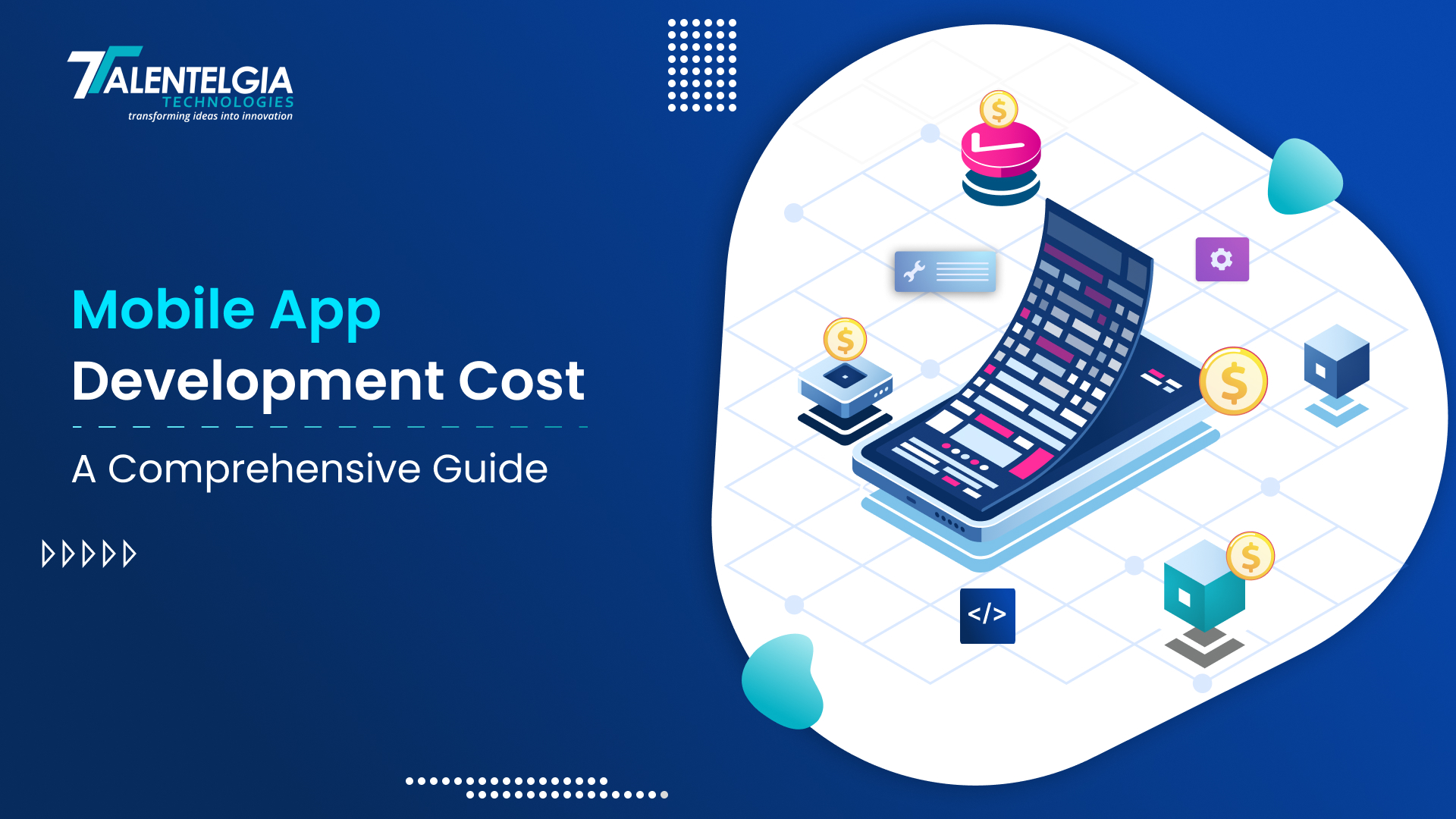

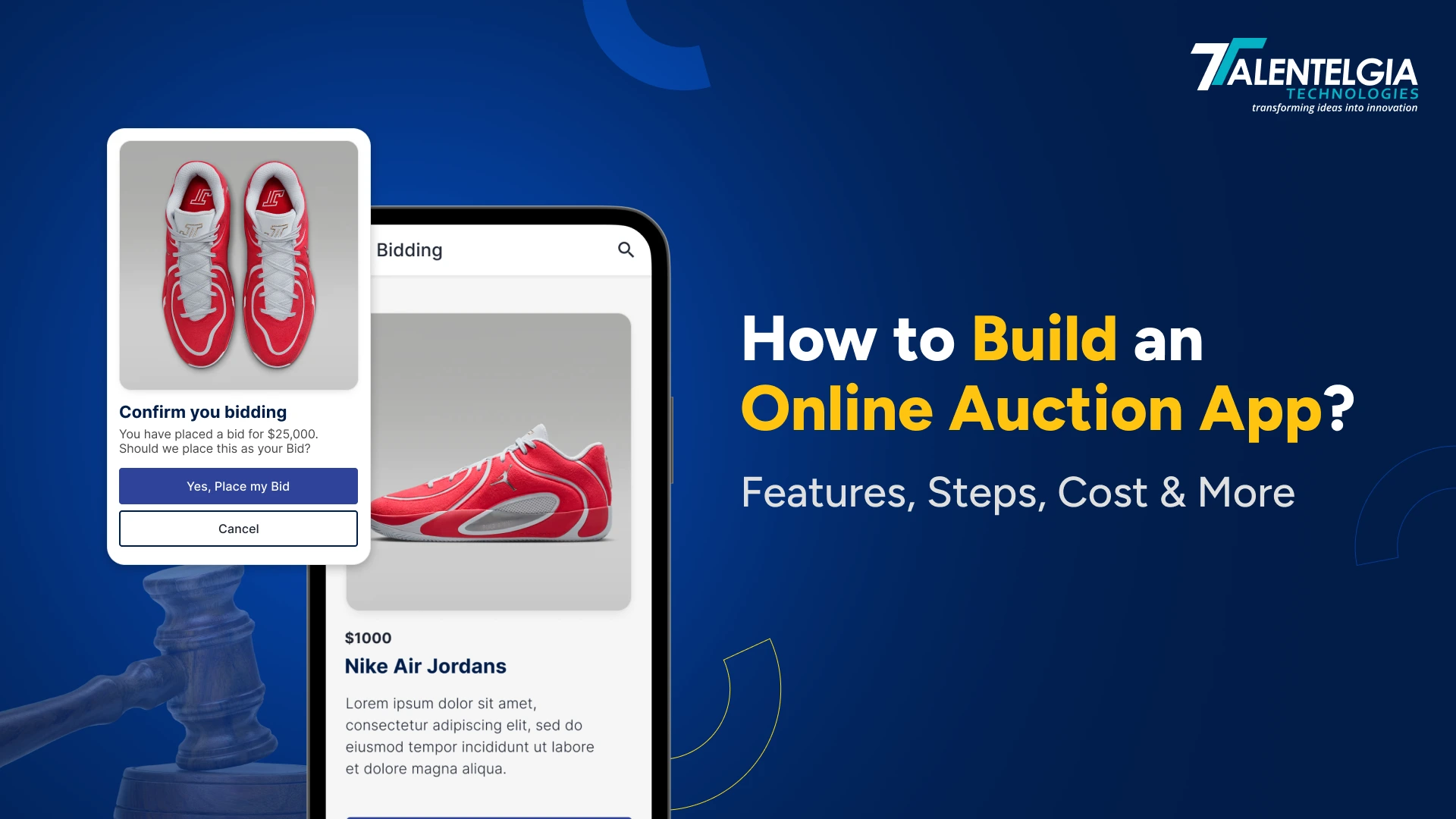

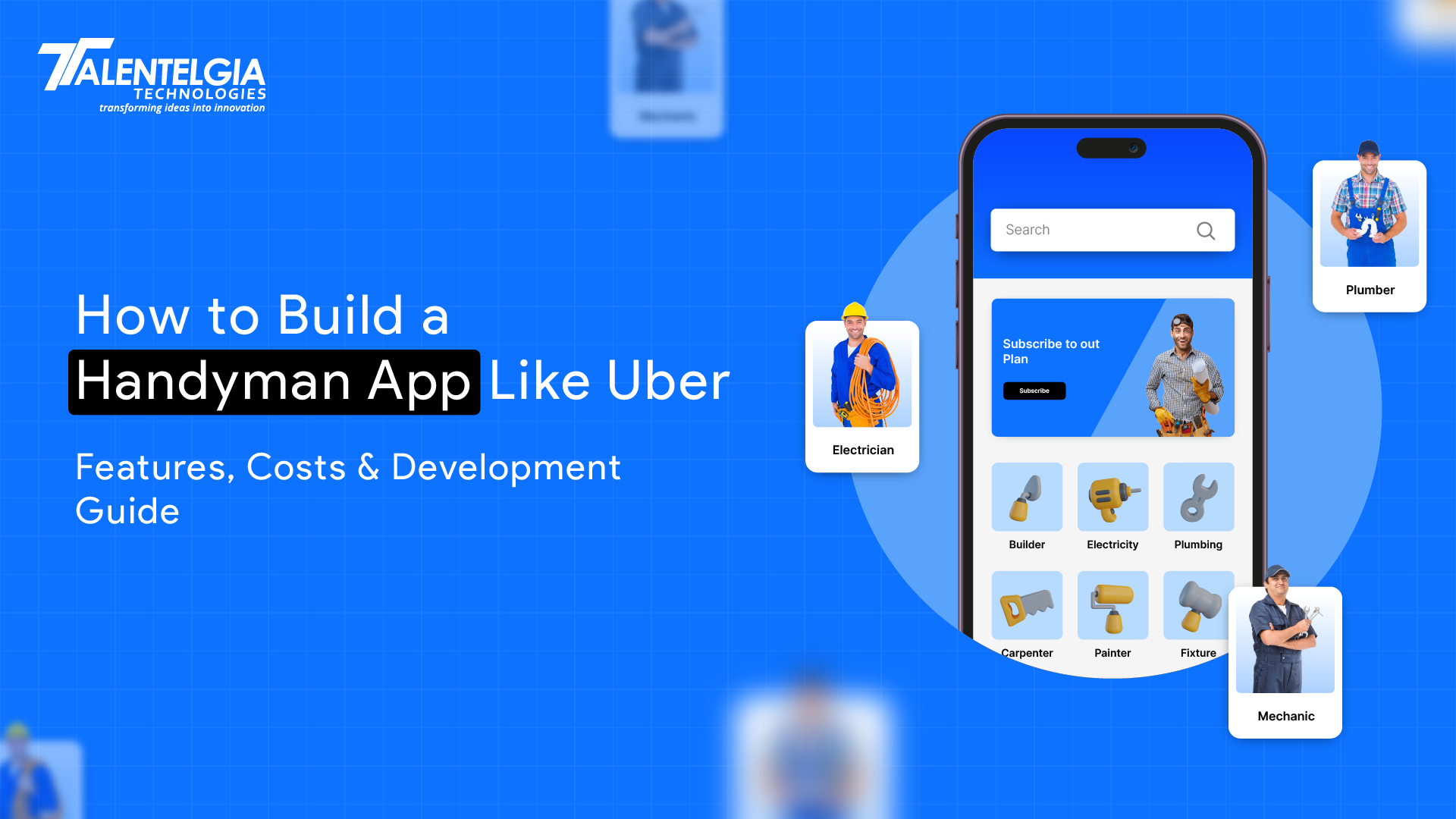
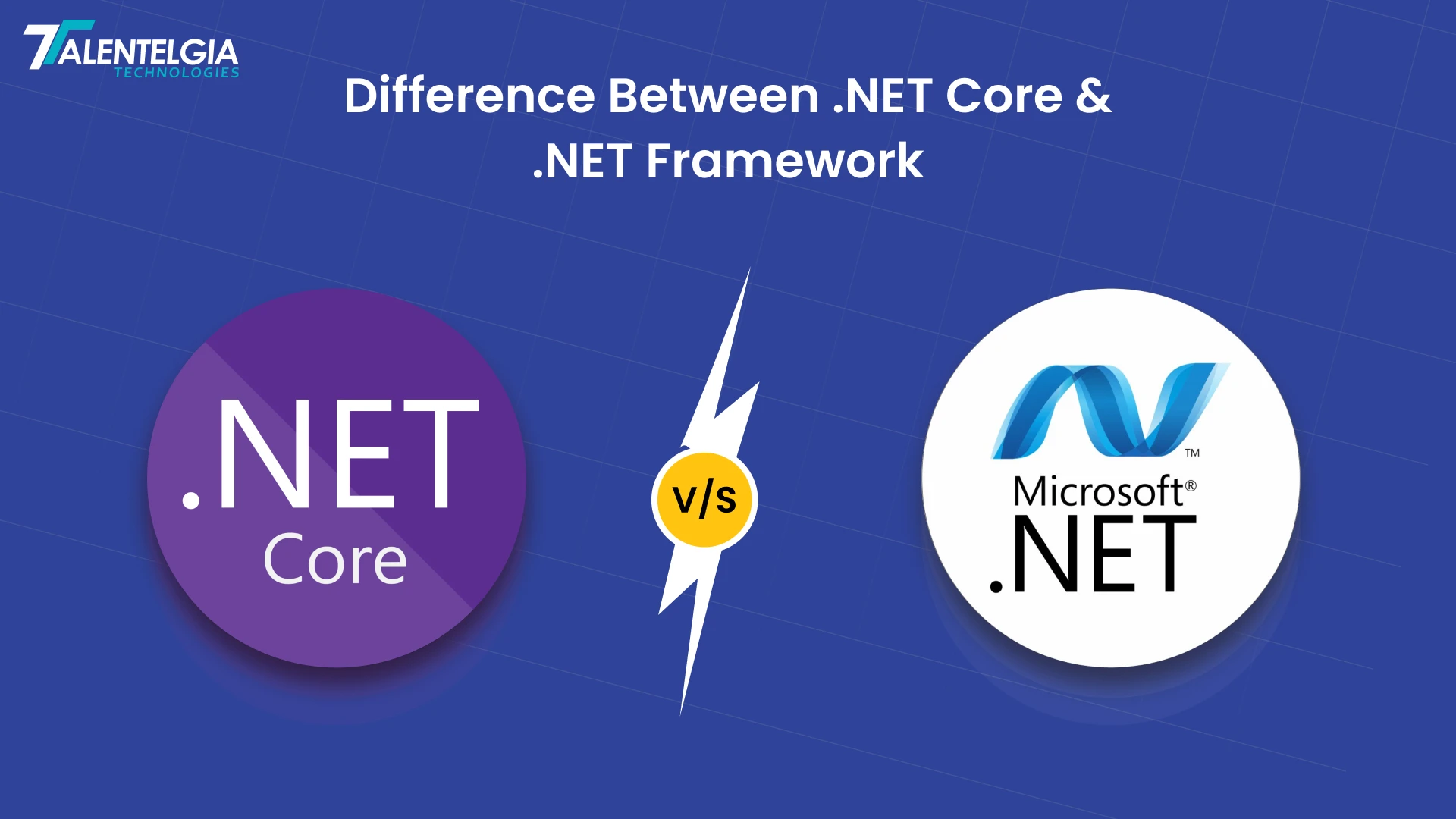











 Write us on:
Write us on:  Business queries:
Business queries:  HR:
HR: 




